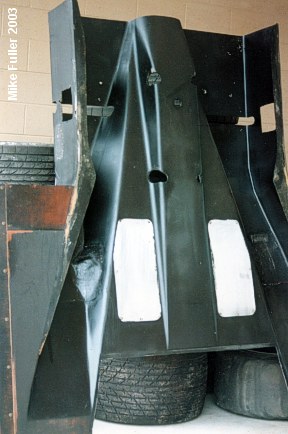Uwe wrote: ↑19 Dec 2020, 12:43
Stu wrote: ↑19 Dec 2020, 10:46
You need to think in three dimensions and (almost) treat the front of the car as a separate entity to the rear (but not at the expense of the rear!).
The position and shape/size of the ‘throat’ will determine the sensitivity of the downforce generated and the CoP location.
The design of the inlet will determine the potential of the system, and the outlet the efficiency of the system.
Does throat section must be curved or straight?
Wherse is center of pressure of underside,at throat?
So if I want to load front and back part equal,then I must put throat in the middle?
What I think....
Your front downforce needs to very stable fore/aft (so is best suited as a separate, shorter Venturi).
The main section still needs to be stable, but as it operates over a much larger section is exhibits huge forces on the suspension system. Great care needs to be taken over the section reduction to the throat so as not to create a blockage and stall the whole system at maximum suspension travel. You then ‘trim’ the rear downforce with a small wing to cater for the fore/aft CoP position movement through the operation of the car.
If you want to see how it was made to work in F1 check out the early 80’s cars from Brabham or Williams. These used a small front wing as an aero ‘trimming’ tool.
If you want to see how it was made to work on full-bodied vehicles the best examples that I can think of are the Jaguar XJ14R and Peugeot 905b. They had what look like front wings, but are actually operated as front ventures (much like LMP1 Porsche/Audi/Toyota), but designed to work with proper rear Venturi rather than a flat floor and diffuser (which has a huge change in CoP).
You want the intake throat to be fully profiled (like the underside of an aero foil) and about twice the area of the throat section. This section needs to be approx the same length as height. You then need to expand after the throat section (this will be 2-3 times the length of the entry). IF you avoid any sharp edges at the throat you will be able to expand this section quicker (the Coanda effect) and maximise the volume of the rear section.
The throat section needs to be reasonably short (no less than the height of the throat, no more than the height of the entrance) and positioned in front of the vehicle CoG.
This will get you a good starting point.
Perspective - Understanding that sometimes the truths we cling to depend greatly on our own point of view.


